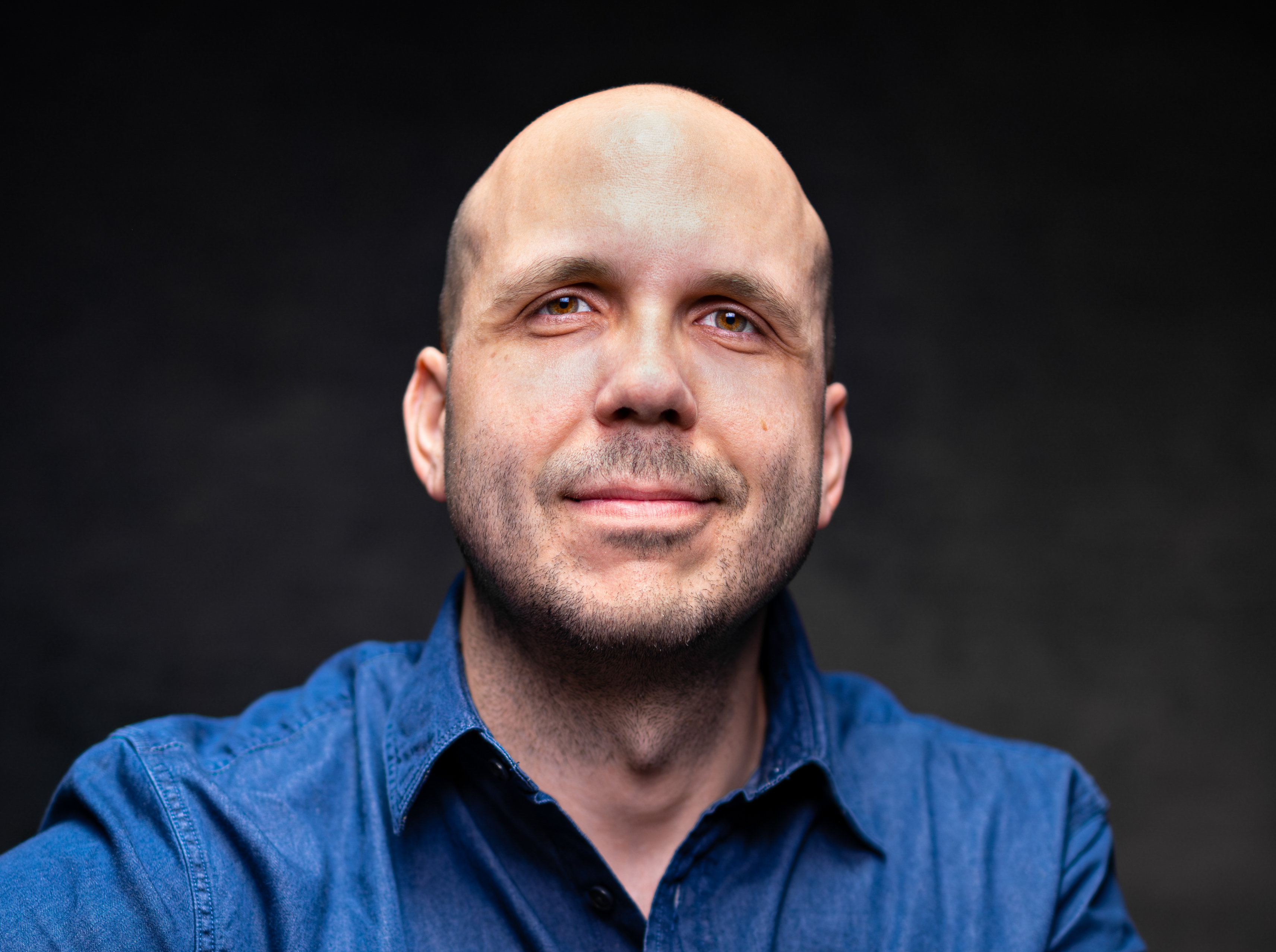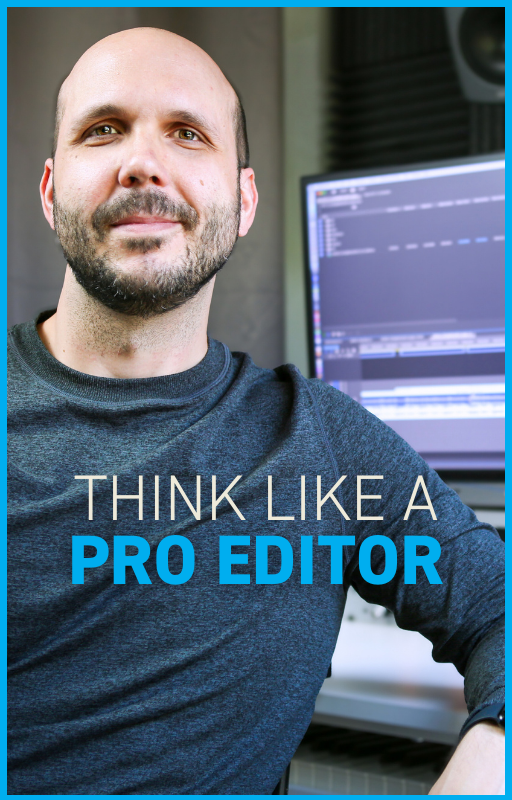5 Simple Ideas That Changed My Editing Forever
Feb 22, 2025I’ve been a pro editor for over 20 years, and when it comes down to it there are five simple ideas that have made the biggest impact on my editing. Today, I’d like to invite you into my edit suite so I can share them with you in the context of a broadcast commercial I recently completed, so you can incorporate these five ideas into your own edits. Stick around to the end for a bit of wisdom that was a real game-changer for me.
What’s the first thing you do when you get a new editing project?
When I started out, I was so excited to get going that I’d just throw footage onto the timeline and start chopping it up. That’s definitely better than procrastinating, but it’s not ideal.
The danger is this: you’re off to the races, creating cut after cut, maybe collaborating with a director or a creative director and you get close to the finish line, take a deep breath, watch what you’ve made… And realize it’s a big pile of nothing. It’s not good. I get a sinking feeling just thinking about it.
As an editor, it’s my number one goal to prevent that scenario from happening, and of all the things I’ve tried, here’s what works . ALWAYS understand the ‘why’ of a project before you begin. For me, that ‘why’ is the emotion you want the audience to feel throughout the edit. It helps if you write it down. It helps even more if you share it with your collaborator so you can get on the same page.
For this commercial, the director and I wanted the viewer to feel excited from the start - it’s a party after all, then a sense of delight or curiosity when the armadillo is introduced, a sense of dread of being that guy at the party who makes a blunder in front of everyone, and then the joy of celebration when the armadillo saves the day. But in one word, “excited”.
You might be thinking, “Great, so I pick an emotion and I get after it!”.
I appreciate your enthusiasm, but there’s a problem. It should almost never be just one emotion.
One issue I see over and over with amateur editing (including my own when I started) is what I call a one-note edit. It could be anything- an interview, a montage, or even a narrative scene, and there’s just one note or one emotion. Nothing happens. Nothing changes.
Here’s something that sounds simple, but it actually takes years to figure out - a story is about things happening to people. And people change because those things happen.
I don’t care how long your story is or what format your story is in. As editors, we must fight for things to happen and for people to change. And if things are happening and people are changing, there will be multiple emotions you’re targeting in your edit, not just one.
That’s why it can be helpful to build out your story structure and your emotional targets at the same time.
Let’s take a look at the story structure in the commercial (see video above).
We have the normal world - people partying in a bar, at the lake, and at a bbq. Then something happens - we introduce an armadillo to the world. Then we have a complication - a guy makes a serious error at a big gathering - bringing the wrong beer to the party. The armadillo saves the day. Now we’re back to the normal world, but it’s forever changed, thanks to that magical armadillo.
So you have a story and some emotional targets. NOW it’s time to start putting things together. I can’t tell you how many projects of mine that would’ve been saved if I had done that first.
But you might be thinking, what can I do to target those emotions? Well, I’m glad you asked.
As an audience member, what’s one thing that can pull you out of a story? For me, it’s when I get ahead of it. Meaning, I know what’s going to happen next.
As editors, we spend a lot of time learning to develop a tempo in our edits, but sometimes we stick with a tempo or rhythm too long, so the audience gets bored or gets ahead of it. And we’ve lost them.
One thing I teach is to develop a rhythm and then change that rhythm unexpectedly. Not only does this keep the audience engaged, but it’s one of the best ways to emphasize an emotion.
The key is to make the change at a point in the STORY you want to emphasize.
Let’s look at the different rhythms established in this spot (see video above).
Party time… Then introduce the armadillo. Longer shot on the party mistake. Longer shot on the celebration. Rhythmic contrast lining up with the story.
And perhaps our biggest tool as editors to evoke an emotion is the soundtrack. The right piece of music can do a lot of the heavy lifting when it comes to emotion, and sound design can make a big impact as well.
But there are a couple of telltale signs of amateur editing when it comes to the soundtrack.
First, a song simply plays for the entire spot, or sequence without real intention of how the music lines up with the emotion or the story.
Second, music is expected to carry the spot so sound design is neglected.
Let me show you what I mean.
One effective technique is to start and stop a music track to emphasize a point like I do here. The silence is a nice contrast and lines up with our character making a big mistake. The music starting again emphasizes the emotion of joy as the armadillo saves the day.
And even though the soundtrack for this spot is driven by music and voice, I used sound design to bring certain shots to life. Like the beer being pulled from the cooler. Or the catching of the can. Sound can actually help draw the viewer’s eye to where you want it to go… And finally, I used sound design to build to the climax of the armadillo transforming the ‘off-brand’ beer…
By now you might be asking, are we going to make some actual edits? Yes, yes we are. My last editing criteria is action - or where to cut. That’s where most editing tutorials start and end, yet, I would argue that it’s the least important part. Honestly, if you’re targeting emotions, you have a story structure and you’re evoking those emotions through rhythm and sound, you’ve already won. You almost can’t mess it up. But we can get the edits right too…
Let’s go cut by cut and I’ll share my thought process for each in and out point.
Shot 1 to shot 2 I’m matching the action of the beer being lifted.
Matching on action can help draw your eye to an object and help make a seamless transition.
Shot 2 to 3 I cut out after the actor points, and then I cut to what he’s pointing at - his friend with a tub of beers.
Shot 3 to 4 I cut out after the friend’s head turns to a can of beer. I purposely chose a shot so the viewer's eye is in a similar place - looking from the head to the beer.
Shot 4 to 5 I imply a match on action as the beer is lifted out of the cooler and is then thrown to another friend
Shot 5 to 6 I cut out after this guy steps into place, and then I cut to a slow zoom in on the armadillo. Then a snap zoom in to his face as he’s introduced.
Shot 6 to 7 is a glance-object cut. The armadillo is clearly looking at something, then we cut to what he’s looking at - a delicious Lone Star beer.
Shot 7 to 8 we cut from the beer can to 2 friends chatting, I’m focusing on the action of the guy wiping his forehead as the voice over calls out ‘parched locals”
Shot 8 to 9 - the viewer’s eye is on the head wipe, and then we can to a shot of a guy entering the party at the same part of the frame (another use of eye trace).
Shot 9 to 10 I cut in closer to the guy, to emphasize the mistake, giving the viewer a chance to read “Not Lone Star”
We whip pan and zoom to the armadillo who works his magic, and suddenly the beer is transformed in a graphic match (beer is in the same position, but different)
Then we have a zoom out and celebratory raising of the Lone Star beer
And we hard cut to the armadillo relaxing by the lake.
There you have it - the five simple ideas that changed my editing forever - target emotions, tell a story, and evoke those emotions with rhythm, sound, and action.
And let me leave you with this piece of advice:
If you’re thinking to yourself - I wish I had an editing project that was advanced enough, or well-written enough, or exciting enough to apply some of these concepts, but I just don’t have one.
I want to stop you there. I don’t care if you’re editing a montage of stock footage just for fun, an interview-style corporate video, or even a home movie, as an editor you can and should ALWAYS fight to figure out the emotional targets and a story structure where things happen and people change. Nail down those two things and then use all of your other editing skills to support them. Do that and you’ll be in the top 1% of editors.

Austen is an ADDY award-winning film & commercial editor with over 20 years of experience. He has worked with global brands like Meta, KPMG, SAP, and Christianity Today. His PSA work has championed causes like school safety (with Matthew McConaughey), driving safety, and anti-tobacco. A thought leader in the editing field, his online lessons quickly amassed over 100K views after launch.

